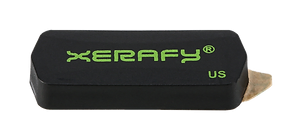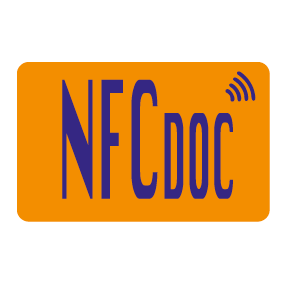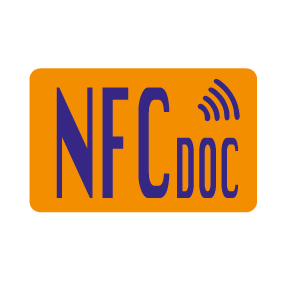Xerafy NANO Plus is a high-performance RFID tag designed for on-metal applications with reliable Chip Type. Mainly used in Tool Tracking, IT Asset Management, Healthcare, Manufacturing & Logistics, Aerospace & Defense

Ultimate Power/Size
The Xerafy NANO Plus is a high-performance RFID tag designed for on-metal applications in challenging environments.
TECHNICAL DESCRIPITION OF xerafy NANO Plus
- RF Protocol: EPC global Class 1 Gen 2.
- Frequency: 902–928 MHz (US) and 865–868 MHz (EU).
- Chip Type: NXP UCODE 8.
- Memory: 128-bit EPC, 96-bit TID, and no user memory.
- Read Range:
- Fixed readers: Up to 6 meters.
- Handheld readers: Up to 4 meters.
- Material: Industry-grade polymer for durability.
- Temperature Resistance:
- Operational: -40°C to +85°C.
- Survival: Up to 150°C (168 hours).
- IP Rating: IP68 (waterproof and dustproof).
- Shock Resistance: Survives 1-meter drops onto concrete.
- Compression Strength: 167 psi (1,150 kPa).
- Mounting Options: Industrial adhesive.
applications OF xerafy NANO Plus
The Xerafy NANO Plus RFID tag is designed for on-metal applications and is widely used in various industries due to its compact size and high performance. Here are some of its key applications:
Primary Use Cases
- Tool Tracking: Ideal for managing tools and equipment in industries like manufacturing, aerospace, and oil & gas.
- IT Asset Management: Helps in tracking and managing data center equipment and other IT assets.
- Healthcare: Suitable for medical device tracking, especially in environments requiring sterilization.
- Manufacturing & Logistics: Enhances inventory management and work-in-progress tracking.
- Aerospace & Defense: Used for tracking critical components in aircraft and military equipment.
The NANO Plus is particularly valued for its rugged design and ability to withstand harsh environments, making it a reliable choice for industrial asset tracking.
You can explore more details in the Xerafy NANO Plus Datasheet
RFID TAG PICO SERIES
The small on-metal RFID tags from Xerafy’s PICO series enable item-level tracking with small industry-grade form factors ready for deployment.
With their exceptional size-to-read-range ratio, Xerafy’s PICO series of ceramic RFID tags are proven in the field at production facilities around the world, enabling asset tracking for small equipment and tools, alongside the MICRO high temperature tags, and XS smallest RFID tags.
Size matters to RF performance with read-range and accuracy decreasing with the tags’ dimensions.
Not all RFID systems can track at close ranges, and Xerafy’s early innovation in small tag sizes as well as with embeddable RFID tags that can be flush-mounted into the asset helped break the expected range/size ratio barrier for RFID systems.
How to customize
PICO SERIES XERAFY are standard tagging solutions that are fully personalized for RFID systems, to the exact specifications of the critical assets and equipment they are tracking.
Service Bureau customization options are available to mark and program RFID tags. On the other hand, RFID labels printing can be done in the field or taken care of by the Service Bureau.
And for unique requirements and features, it is also possible to custom build a tagging solution.
PICO SERIES are customized using physical markings to feature an asset identification number, a barcode, or a logo for instance.
Custom asset tags can be custom marked in the field, or be taken care of by the Service Bureau of the manufacturer or distributor.
encode
PICO SERIES are Programmable tags use RFID chips that are specifically designed with memory that can be written.
This allows for the tags to be encoded with custom EPC ranges for unique identification, serialized or unserialized. The quantity of information that can be encoded will depend on the specifications of the chip being used.
RFID Engineering
PICO SERIES can be designed specifically for a tracking system’s application and deployment requirements: Form factor, material, mounting system, read range, accuracy, user memory, fixed and/or handheld RFID readers, on-site printers and encoders, software configuration.
Connected assets are an example of custom-built RFID tagging solutions that refer specifically to equipment that OEMs have designed with RFID and IOT features built-in.
If you need more details about this specific subject, MAIL TO
SELECT THE PRODUCT OF YOUR INTEREST (sib)




